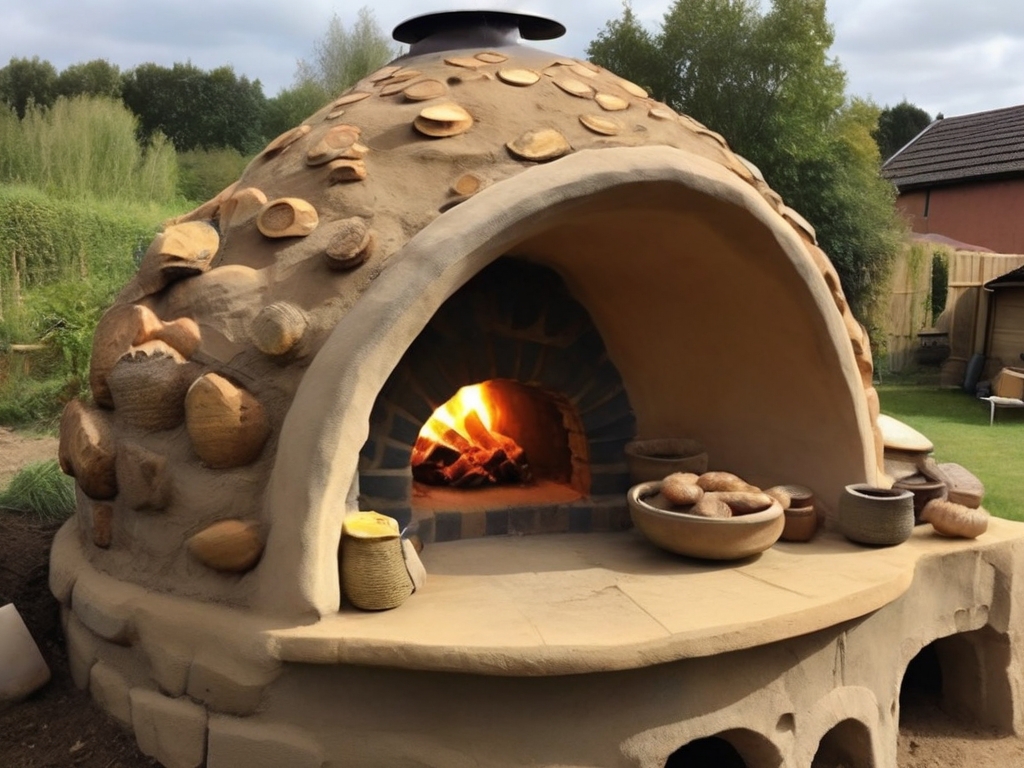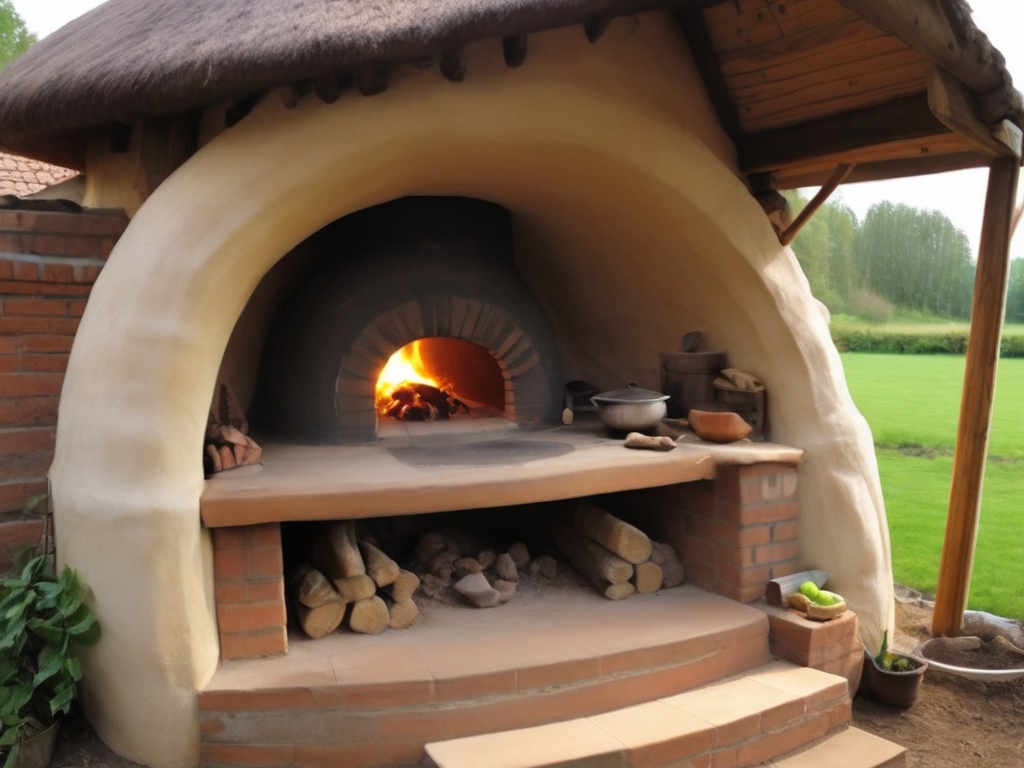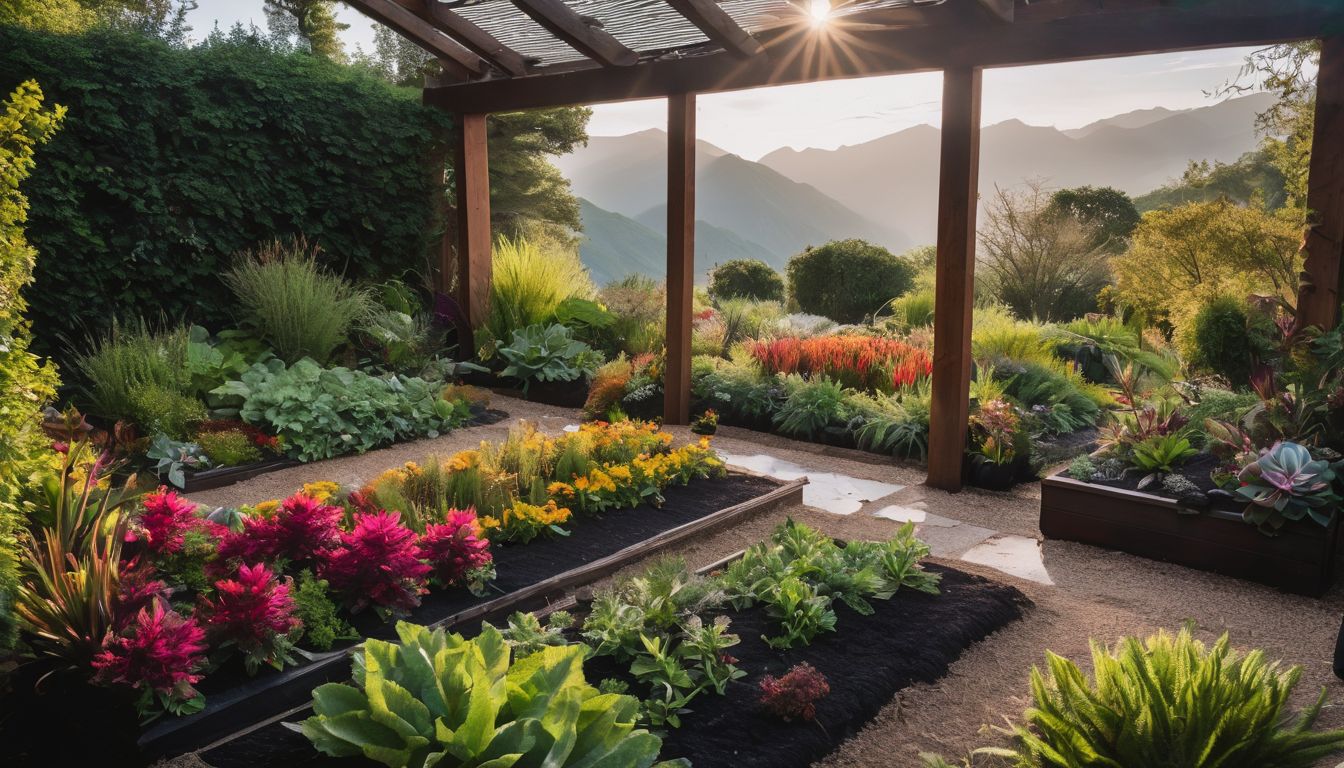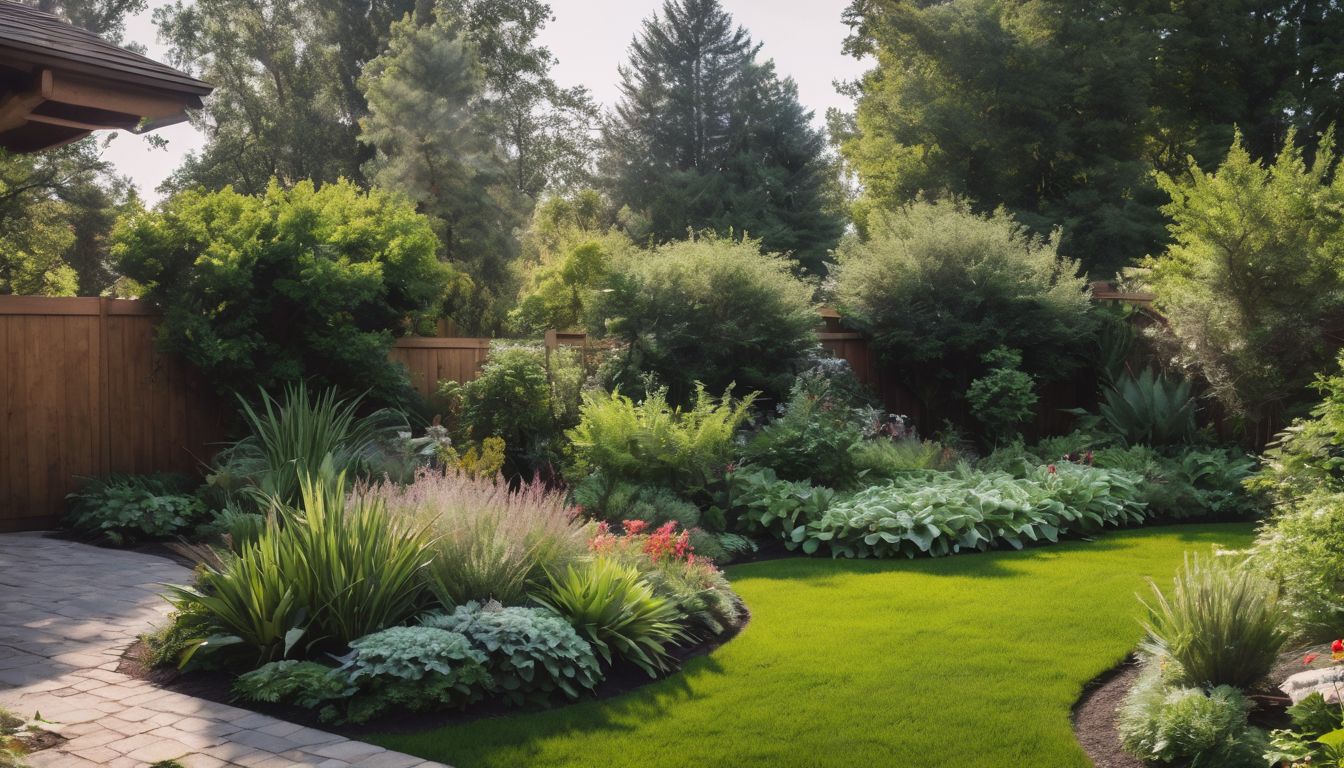Imagine moving your baking projects outdoors. Imagine constructing your own oven out of natural materials in the same way people have for centuries. Imagine increasing your level of self-sufficiency by decreasing your use of fossil fuels in baking. Best of all, imagine a project that your whole family, group of friends, or neighborhood can enjoy, a project that is productive, fun, messy and earthy in ways that adults and kids alike will appreciate. Outdoor cob ovens can be used for any baking project that would normally be confined to your gas or electric oven indoors, so why not use your extra yard space to start your own outdoor kitchen?
BENEFITS for the environment
Clay, subsoil, sand and straw can be found in virtually all climates, so, no matter where you live, you can find your building materials locally. This will eliminate any fossil fuels that might have been used in transporting materials long distances. The materials you will be using are not commonly used in building in the modern day, so you will not be drawing upon natural resources that are already heavily taxed by other people. Straw can be grown in an environmentally friendly way with little or no use of pesticides and fertilizers that pollute the environment. Once your beautiful oven has been constructed and used for years, you can take it apart and reuse the materials for your next cob building project, or simply dispose of the materials in your local area without worrying about these natural materials having any ill effects on the ecosystem.
In using your oven, it is important to make sure that the wood you use was harvested in a sustainable manner. You can check if the particular forest manager from whom you purchase your wood is certified by the Sustainable Forestry Initiative (SFI) , or some other independent certifier. If you are harvesting your own wood, it is important to be familiar with sustainable forest management practices for your area. Practices may include only harvesting a few trees at a time from each part of your land, planting new trees to replace the ones you harvest, and leaving a permanently untouched strip of forest by water sources to protect against sediment runoff.

Burning wood will contribute some amount of carbon to the atmosphere, but think also of all the carbon you save by using a local source of fuel that does not need to be transported far to reach you. There are also ways to make sure that you get the maximum amount of energy from each pound of wood you burn. One of the most helpful tips is to let your wood dry before burning it! Burning dry wood can be more than twice as efficient as burning freshly harvested wood, which has a much higher water content than dry wood. Depending on what type of indoor oven you normally use and how dry the wood for your outdoor oven is, an outdoor oven can prove to be more efficient than your typical indoor alternative. Your outdoor oven byproducts will be similar to the byproducts of a fireplace (coals, ashes and smoke), but will come in much smaller quantities, because space heating requires a significantly larger amount of energy than does heating your outdoor oven to baking temperatures.
BENEFITS for the neighborhood
Building a cob oven is usually a group project and has the potential to bring a community together in a positive, productive and fun way. While I was helping to mix cob at a co-op in Boston a week or so ago, several curious neighbors stopped in to help. You can bring music outside as you work, giving you a beat to dance to in the cob “mixing bowl.” The experience of making a cob oven is one you will never forget.
COST: Low
You may actually be able to get all of the materials for your cob oven for free, depending on where you live and what kind of land is accessible to you. You may be able to dig up clay by a riverside, dig up subsoil almost anywhere, and find sand on a beach or at a construction site. You could also potentially grow your own straw. Even if you are not able to get all of these materials for free, all of them will be cheap and probably come in bulk.
TIME AND EFFORT: High
It will take you a fair amount of time and effort to piece together this project, but every moment will be worth it when you bite into that first slice of homemade, outdoor bread. It is good to save this project for a time when you can see it through from start to finish. The tasks involved in outdoor oven making include: finding, buying or growing the materials, transporting the materials, mixing the materials, constructing the oven itself (leaving time for drying in between layers), constructing the door, and firing it up for your first baking adventure. You may also wish to build a wooden, metal or plastic roof over the oven, or at least put up a tarp, in order to help the oven last through years of rain and snow. Building a cob oven might seem like a daunting task at first, but keep in mind that many hands make light work, and working with a group of people can also make the project so much fun that time will fly by and you won’t want it to be over!
What is this “cob” stuff you speak of?
Ever heard of adobe? Adobe is a more widely known material from which bricks are made, and cob is a lesser known, but just as wonderfully sustainable material. If the word “adobe” calls to mind bricklayers in North Africa, the Americas and the Middle East, “cob,” although it originated in North Africa, most commonly evokes images of old buildings in Cornwall, Devon, and other parts of the UK, where both the buildings and the cobbing technique survive to this day. Cob can be used to construct property walls, houses and outdoor ovens. Here we will focus on the project that will likely be most feasible for aspiring builders, both urban and rural, around the world: ovens.
Cob has four main components: clay, subsoil, sand, and straw. All of these materials can be found or grown in most climates. Of the three soil components used to make cob, clay is the most weathered material, subsoil is partially weathered and is found just below the topsoil, and sand is the least weathered and most coarse. Straw is used as the fibrous, binding material that keeps the rest of the cob together.
How can I make cob?
Ingredients/ Materials:
NOTE: Amounts of ingredients needed are rough estimates and will depend on how dry or wet the environment is. For your convenience, these estimates are expected to err on the side of having too much rather than not enough.
• Clay (about 8-12 gallons) – to make cob and slip – Clay can be found underground by the side of a body of water. Clay particles are very fine, and clay found underground should feel almost the consistency of potter’s clay to the touch.
• Subsoil (about 20-30 gallons) – to make cob – Subsoil can be found under topsoil. Topsoil contains living organisms, so it is important to eliminate all topsoil from your subsoil collection, since living organism will die, decompose, and cause your cob oven to rot. Subsoil can also often be found in large piles at construction sites, and construction workers are usually happy to share this “treasure” with you.
• Sand (about 30-40 gallons) – to fill oven’s base and to put in cob as needed – Sand can often be found by bodies of water, or collected from construction sites like subsoil.
• Straw (one bale) – to make cob – Make sure you do not confuse straw with hay. Hay can still be partially green and has grain on it, while straw is dry, yellow, and does not have any of the grain on it. If you put hay into the cob walls of your oven, you will risk having your oven rot! – Grow your own or buy it from a local farmer to have the lowest possible impact on the environment.
• Stones and/or bricks (enough to construct the base) – to provide a supportive and insulating base – You may be able to find stones on your property or at a nearby park. If you live in a rural area, any farmer will likely be thrilled to get rid of some stones and give them to you. Bricks can be bought at a hardware store or from a hardware website. Try local options first!
• Tarps – one for cob-mixing, and another for clay-water mixing if you don’t have a large tub. Another to shelter the oven if you don’t want to build a protective roof over it – Hardware stores are a good option.
• Large tub or pit – for clay-water mixing – Check out the hardware store or Agway, or simply dig a hole in the ground.
• Two gallon bucket (at least one) – for transporting ingredients – A hardware or gardening store should have exactly what you need.
Process:
Imagine your different types of soil as the wet and dry ingredients for cookie dough, your straw as the shredded coconut (yum yum), and your feet as the stirring spoons. Your first task in making cob is to mix the clay with water, ending up with a substance called slip. (Please note: Before making slip, set aside at least two buckets of your clay to use later on in your building process.) One of the best and most fun ways to mix the clay and water is with your feet, so you can either mix them in a large tub, or you can place a tarp inside of a pit in the ground and do your mixing there. Once the slip is the right consistency, place a bucket of it on another tarp, and pour on two to three buckets of subsoil. Proceed to mix the slip and subsoil with your feet by jumping, dancing, and generally boogieing, until you have a uniform material. Or, if you feel like being traditional about it, get a pair of oxen to do the trampling for you.
Take a handful of the mixture, mold it into a ball, and drop it onto a corner of the tarp. If the ball splats open and looks liquidy, go ahead and add sand, gradually mixing in more and more until a handful of the material neither splats nor cracks like dry earth when it is dropped. When you’ve got this ideal consistency, you are ready to add the straw. Straw is the part of the cob that holds the whole thing together, so apply straw liberally, although gradually, as you continue to mix. Once you’ve mixed in the straw, there you will have it: your cob!
OK, so now I have the cob. How do I make the actual oven?
In order to make your oven, first you will need a sturdy base that can hold heat. Begin by finding some large stones and making them into a ring on the ground, about four feet in diameter. Then pile on more stones, until your ring of stones has grown into a cylindrical wall. Fill the inside of cylinder with sand, packing it in tightly and smoothing it out at the top. Here is a picture of how the oven’s base should look:
The next step is to lay bricks or smooth stones over the entire base. This layer will form the floor of the oven.
Now it’s time to build a sandcastle! You probably haven’t made one of those in a while, and so far from the beach as well. Just pile sand on top of the layer of brick/stone, leaving about a foot of the base still exposed all around your sand castle. Form a sand dome, the size that you want the inside of your oven to be. On a base that is four feet in diameter, a sandcastle two feet in diameter and eighteen inches in height should serve you well. Then cover the sand dome with newspaper strips or plastic, and coat that newspaper or plastic with some of your remaining clay:
Then proceed to cover the clay with cob. Keep your hands wet with clay as you work (you can mix your remaining clay with more water at this point), gradually thickening your first layer of cob to about three to four inches. After you’ve added this first layer, poke holes all over the dome, with each hole being about an inch in depth. These small holes will help the next layer of cob to adhere to the layer below it. Let the first layer of cob dry for several days, and then carve out the doorway of your oven. A doorway that is about 11 inches in height and 8-12 inches in width should give you ample room to put things in and take things out, while still maintaining the structural integrity of the oven. The oven doorway should start at the base of the oven and should extend up in a half-circle shape, like the entrance to an igloo. Before applying the second layer of cob, add a thin layer of slip (clay and water) all over the first layer to help the second layer of cob stick to the first.

Your second layer of cob is an important insulating layer, so add more straw to this layer than you did to your first. Again, poke finger holes and let the second layer dry for a few days before adding the third layer (which does not need as much straw as did the second). Then let the whole thing dry for another few days, and, in the meantime, build a door out of metal or wood that will fit the doorway you have carved. The door can actually be a little smaller than the doorway itself, but it should fit snuggly enough to prevent it from falling into the oven. While you bake, you can hang a wet cloth over the door to help keep it in place and to help keep your baked goods moist. Don’t forget to include a handle on the door! Once the oven is dry, dig the sand out from inside the dome, and get ready to light your first fire!
Build a fire inside the oven with sticks and logs, but none too thick. Big logs are not necessary. Once the fire has been burning for a few hours and has died down somewhat, remove the coals and ashes, put in the food you wish to bake (bread, pizza, calzones, you name it), and put on the oven door. Check periodically to determine when your food is done, and then eat and enjoy!




